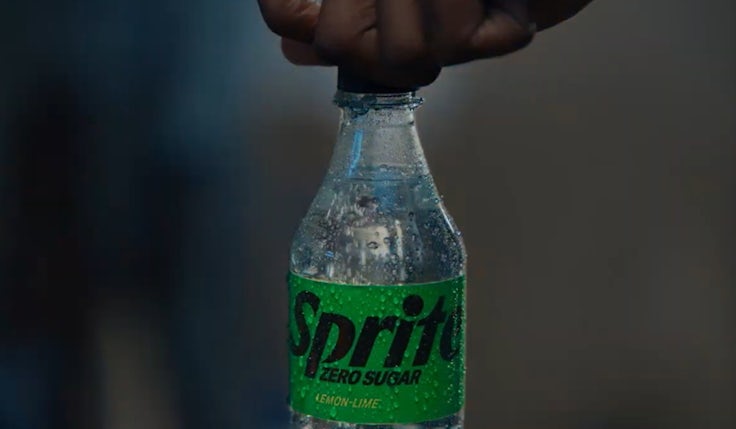Sprite made biggest household penetration gains of any FMCG brand in 2022
Around half of FMCG brands grew in value in 2022, with 88% of those who grew also seeing increased penetration in the year, according to Kantar report.

Sprite was the fastest growing FMCG brand globally in 2022, in terms of household penetration, according to figures from Kantar, as the Coca-Cola Company invests behind the brand to make its positioning more united globally.
According to the research, reported in Kantar’s ‘Brand Footprint’ 2023 report, the Coca-Cola Company-owned brand gained 34 million households in 2022 versus the year prior.
Unilever’s Sunsilk and Dove came second and sixth in terms of the biggest penetration gains in 2022, Nestle’s Nescafe came third and PepsiCo’s Lay’s fourth.
Coca-Cola was eighth on the list of penetration gains in the year, adding 25 million households according to the research. It also topped Kantar “most chosen” brand list for 2022.
The “most chosen” list is compiled based on a metric known as Consumer Reach Points (CRPs), which is a measure of the brand’s strength in terms of the number of times it is chosen by shoppers. The metric combines population (number of households), penetration (percentage of households buying your product) and consumer choice (number of interactions with your brand). Coca-Cola tops the list, with Colgate and noodle brand Maggi rounding out the top three.
In the UK, specifically, the brand with the highest CRP is Warburtons.
Why Coca-Cola is making a ‘unified’ global push behind the Sprite brand
The “most chosen” list ranks brands in terms of frequency of interaction as well as household penetration.
Some high-profile marketing thinkers, such as the Ehrenberg-Bass Institute, argue that brands should focus on acquisition. It argues that while growth comes from both acquiring new customers (i.e. penetration) and customers buying more often, but that tactics geared towards the former can lead to the latter. Growth comes from acquiring even infrequent customers according to Ehrenberg-Bass.
The research from Kantar finds just under half (48%) of FMCG brands globally grew in terms of value in 2022 versus 2021. Of those growing brands, almost nine in 10 (88%) have grown with higher improved penetration.
Over half (51%) of brands growing in terms of value did so with both higher penetration and frequency, with 37% achieving growth with just higher penetration.
A higher proportion of small brands grew versus others. Almost six in 10 (56%) of small brands saw their value grow in 2022, versus just 37% of medium, large and “super” brands.
Coca-Cola’s brands see success
Coca-Cola managed to retain its position as the “most chosen” global FMCG brand, while gaining around 25 million households in the year.
The brand power of Coca-Cola Company’s most famous product is evident, but the company also saw success for its other brands, namely Sprite and Fanta.
Sprite and Fanta, both have risen up the ranks in the “most chosen” list. Sprite gained one place in the list, while Fanta rose eight places in the rankings.
The business has been investing behind both brands. In 2022, Sprite launched its first-ever global platform ‘Heat Happens’, alongside a redesign of its packaging.
Speaking to Kantar as part of the report, Sprite’s global senior director Shrenik Dasani, who led the global growth mission explained the execution of the campaign.
“It was brought to life with a globally relevant, locally nuanced platform featuring real-time digital and social experiences, music experiences and content, and new consumer, shopper and out-of-home communication that tapped into relevant and topical moments and passion points,” he said.
Earlier this year, sparkling flavours and brand lead Aaliyah Shafiq-Ely told Marketing Week Coca-Cola was making a “concerted” push behind the lemon-lime drink to build a global presence and maximise its potential for the business.
Similarly, Fanta launched a global identity for the first time earlier this year, to unify the presence of the brand.
Sprite and Fanta are two of the oldest brands in Coca-Cola’s portfolio, first produced in 1959 and 1940 respectively; however, the company continues to invest behind them to stay relevant to consumers.
“Penetration requires a combination of effective marketing, strong distribution channels, and unique product proposition,” Kantar’s head of marketing, Worldpanel division, Virginia Garavaglia says.






